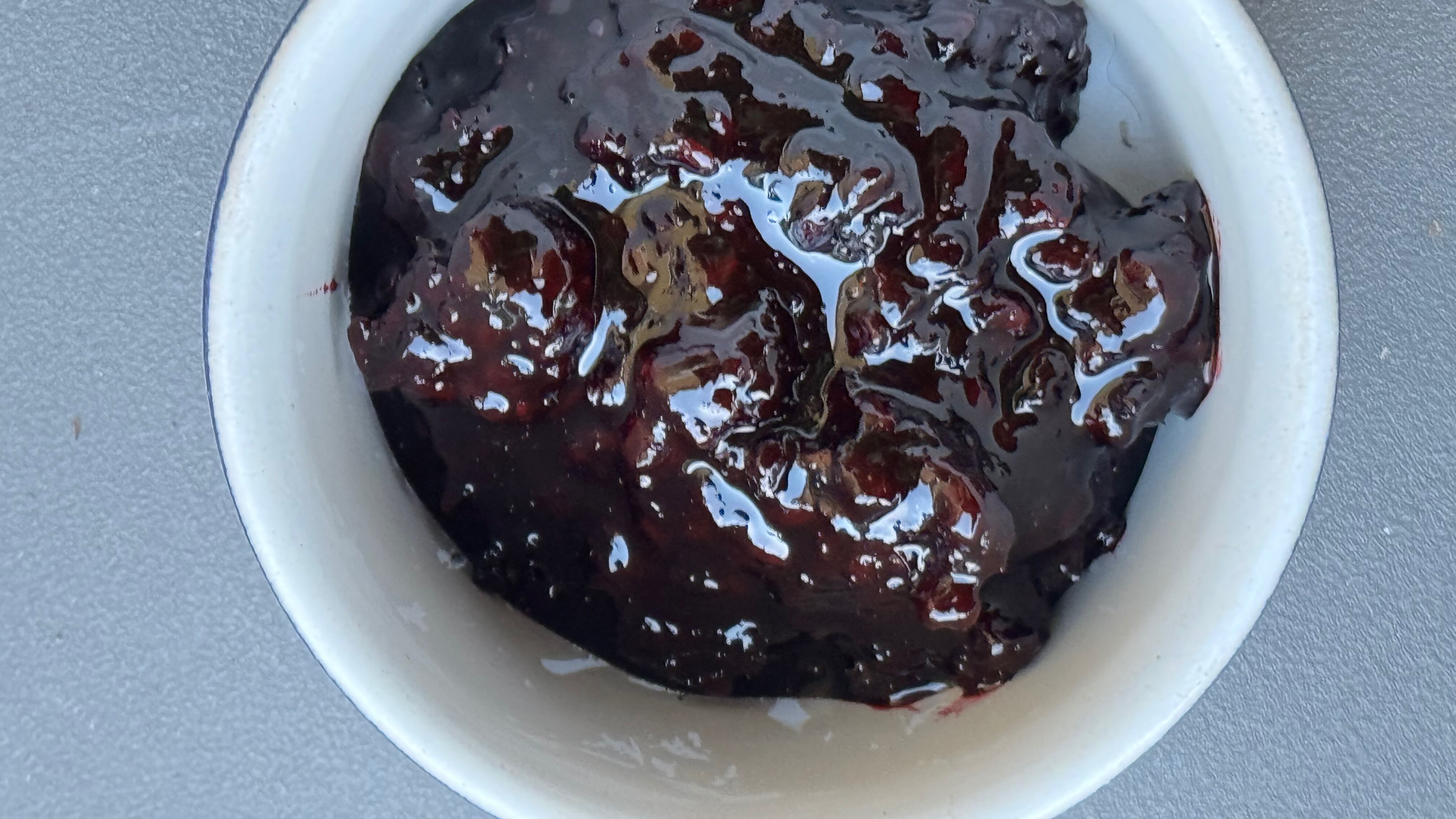Jim Dixon wrote about food for WW for more than 20 years, but these days most of his time is spent at his olive oil-focused specialty food business Wellspent Market. Jim’s always loved to eat, and he encourages his customers to cook by sending them recipes every week through his newsletter. We’re happy to have him back creating some special dishes just for WW readers.
When I made four peanut butter and jam sandwiches every day for our boys’ school lunches, I made lots of jam. Invasive Himalayan blackberry patches supplied the fruit I’d mix with lots of sugar, a little lemon juice, and a packet of powdered pectin in the biggest pot we had. The jam had to boil for what seemed like hours, making the kitchen unbearably hot during the height of summer. Putting it up in jars meant another few hours in the hot kitchen as the boiling water bath sealed the lids. But the pantry full of homemade jam that lasted through the winter made it seem worthwhile.
Freed from the tyranny of school lunch production, these days I only make jam for myself. I’ll can a batch occasionally, but I usually just make enough to eat over the next couple of weeks so I keep it in the refrigerator or freezer. I use a lot less sugar than the typical 50-50 fruit-to-sugar ratio needed to get the preserving power of sugar, so freezing works best, but most of the time I just eat it quickly, spooned over yogurt, spread on toast or swirled through an olive oil cake.
While humans have preserved fruit with honey for centuries, it wasn’t until the rise of the Atlantic slave trade that large-scale sugar production made jam affordable. Anthropologist Sidney Mintz’s groundbreaking work, Sweetness and Power, documented how sugar fueled the Industrial Revolution and the rise of capitalism as we know it today. Raw sugar shipped from the colonies was refined in England to provide cheap calories to working classes as they spooned jam onto toast and washed it down with a sweet cup of hot tea. While sugar is still relatively cheap, labor and environmental issues make production problematic, and in the future it may become a luxury again.
At least my jam method uses less sugar. While food science tells us we need lots of sugar to keep the fruit from spoiling, I make jam to eat right away so that’s not really an issue. I usually use about half as much sugar as fruit, measuring by volume instead of weight, and I get jam that’s sweet enough but not so much that it masks the fruit flavor. I can’t remember where I first read about this boil-and-rest approach, but I’ve used it with plums and figs as well as blackberries, and the jams were just fine.
Recipe
3 pints blackberries
2-3 cups sugar
Juice from 1 lemon, optional
Combine the berries, sugar and, if used, the lemon juice in a large pot, preferably with a wide bottom. Let it sit for at least a few hours or overnight. Bring the mix slowly to a boil, keep it boiling for about 5 minutes, then remove from the heat. Leave the pot on the stove to cool.
The next day, slowly bring the jam to boil again. Let it boil for a minute, then turn off the heat. Let the pot sit on the stove for another night, then repeat the process. The jam should have thickened by the natural pectin in the berries, but if it still seems runny, repeat the process again.

